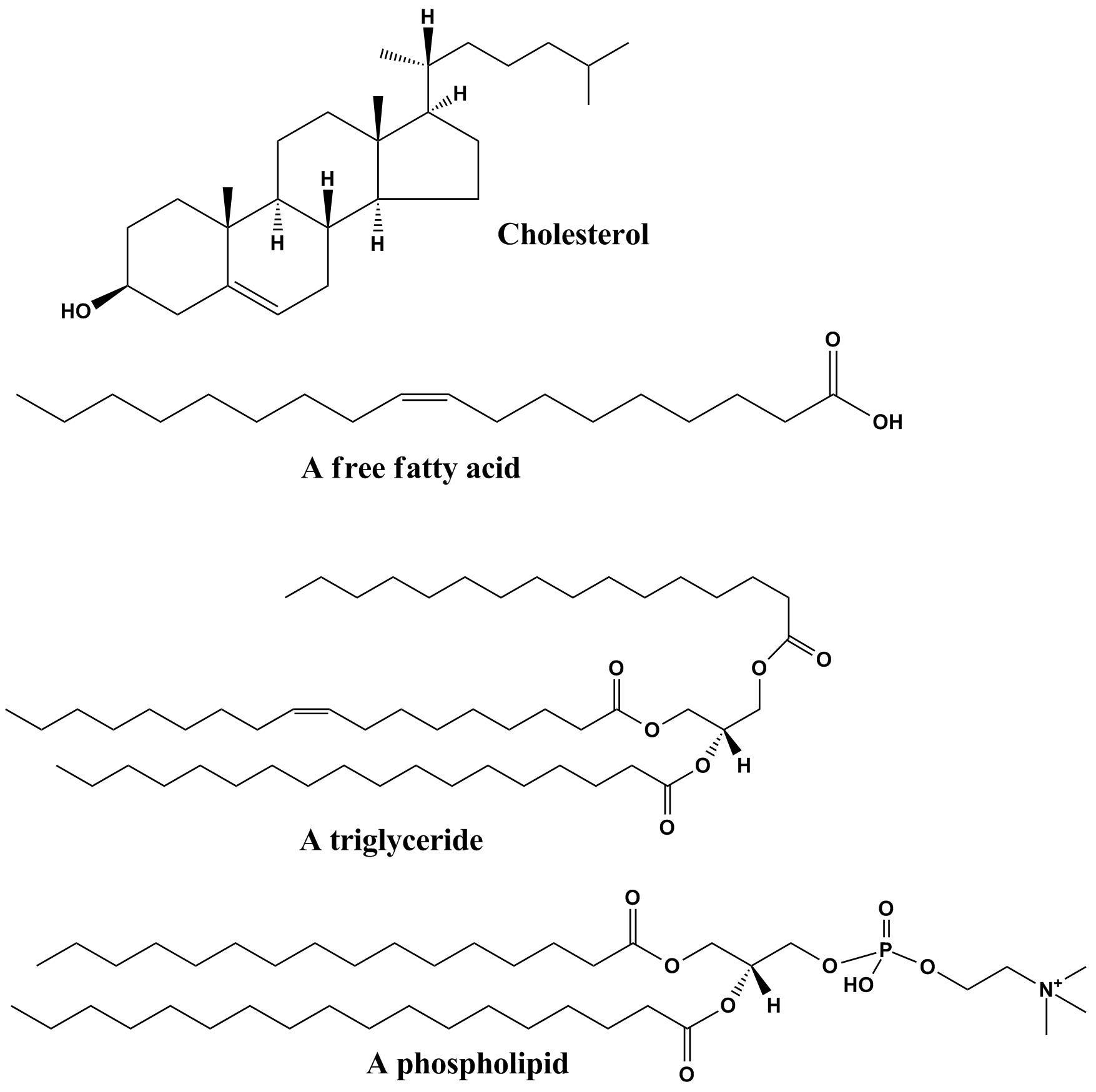
What functional groups are found in lipids?
Answer
503.7k+ views
Hint: A functional group in organic chemistry is a distinct group of atoms or bonds within a compound that is responsible for the compound's characteristic chemical reactions. Regardless of the compound in which it is found, the same functional group can behave similarly by undergoing identical reactions.
Complete answer:
Lipids are hydrocarbon-containing compounds that serve as the foundation for the structure and operation of living cells. Lipids contain proteins, oils, waxes, vitamins (such as A, D, E, and K), hormones, and the majority of the cell membrane that is not composed of protein. Although the compositions of lipids vary, the most common functional groups are ester (both carboxylate and phosphate) and alcohol groups.
A fatty acid is one kind of lipid monomer that consists of one carboxyl group at the end of a linear hydrocarbon with at least four carbon atoms. Despite possessing one polar functional group, fatty acids with long hydrocarbon chains are often hydrophobic (insoluble in water) due to the nonpolar nature of hydrocarbon chains. Fatty acid monomers, unlike other biomolecule groups, are not directly bound to each other in polymer chains. Dehydration synthesis reactions in lipids form an ester linkage between a fatty acid's carboxyl group and the hydroxyl group of an alcohol monomer such as glycerol.

Amido and ketone groups are two other types of functional groups.
Waxes of ester groups, such as beeswax, exist.
Ester groups are found in triglycerides (fats) such as tristearin.
Carboxylate and phosphate groups are found in phospholipids such as lecithin.
Amido, phosphate, and hydroxyl groups are found in sphingolipids such as sphingomyelin.
Steroids are also made up of alcohol and ketone groups.
Note:
A lipid is any organic compound that is insoluble in water. They contain fats, waxes, oils, hormones, and some membrane components that serve as energy storage molecules and chemical messengers.
Lipids have three main biological roles in the body: they serve as structural components of cell membranes, they store energy, and they serve as essential signalling molecules. Triacylglycerols (also known as triglycerides), phospholipids, and sterols are the three major groups of lipids.
Complete answer:
Lipids are hydrocarbon-containing compounds that serve as the foundation for the structure and operation of living cells. Lipids contain proteins, oils, waxes, vitamins (such as A, D, E, and K), hormones, and the majority of the cell membrane that is not composed of protein. Although the compositions of lipids vary, the most common functional groups are ester (both carboxylate and phosphate) and alcohol groups.
A fatty acid is one kind of lipid monomer that consists of one carboxyl group at the end of a linear hydrocarbon with at least four carbon atoms. Despite possessing one polar functional group, fatty acids with long hydrocarbon chains are often hydrophobic (insoluble in water) due to the nonpolar nature of hydrocarbon chains. Fatty acid monomers, unlike other biomolecule groups, are not directly bound to each other in polymer chains. Dehydration synthesis reactions in lipids form an ester linkage between a fatty acid's carboxyl group and the hydroxyl group of an alcohol monomer such as glycerol.

Amido and ketone groups are two other types of functional groups.
Waxes of ester groups, such as beeswax, exist.
Ester groups are found in triglycerides (fats) such as tristearin.
Carboxylate and phosphate groups are found in phospholipids such as lecithin.
Amido, phosphate, and hydroxyl groups are found in sphingolipids such as sphingomyelin.
Steroids are also made up of alcohol and ketone groups.
Note:
A lipid is any organic compound that is insoluble in water. They contain fats, waxes, oils, hormones, and some membrane components that serve as energy storage molecules and chemical messengers.
Lipids have three main biological roles in the body: they serve as structural components of cell membranes, they store energy, and they serve as essential signalling molecules. Triacylglycerols (also known as triglycerides), phospholipids, and sterols are the three major groups of lipids.
Recently Updated Pages
Why are manures considered better than fertilizers class 11 biology CBSE

Find the coordinates of the midpoint of the line segment class 11 maths CBSE

Distinguish between static friction limiting friction class 11 physics CBSE

The Chairman of the constituent Assembly was A Jawaharlal class 11 social science CBSE

The first National Commission on Labour NCL submitted class 11 social science CBSE

Number of all subshell of n + l 7 is A 4 B 5 C 6 D class 11 chemistry CBSE

Trending doubts
Differentiate between an exothermic and an endothermic class 11 chemistry CBSE

10 examples of friction in our daily life

One Metric ton is equal to kg A 10000 B 1000 C 100 class 11 physics CBSE

Difference Between Prokaryotic Cells and Eukaryotic Cells

1 Quintal is equal to a 110 kg b 10 kg c 100kg d 1000 class 11 physics CBSE

State the laws of reflection of light




